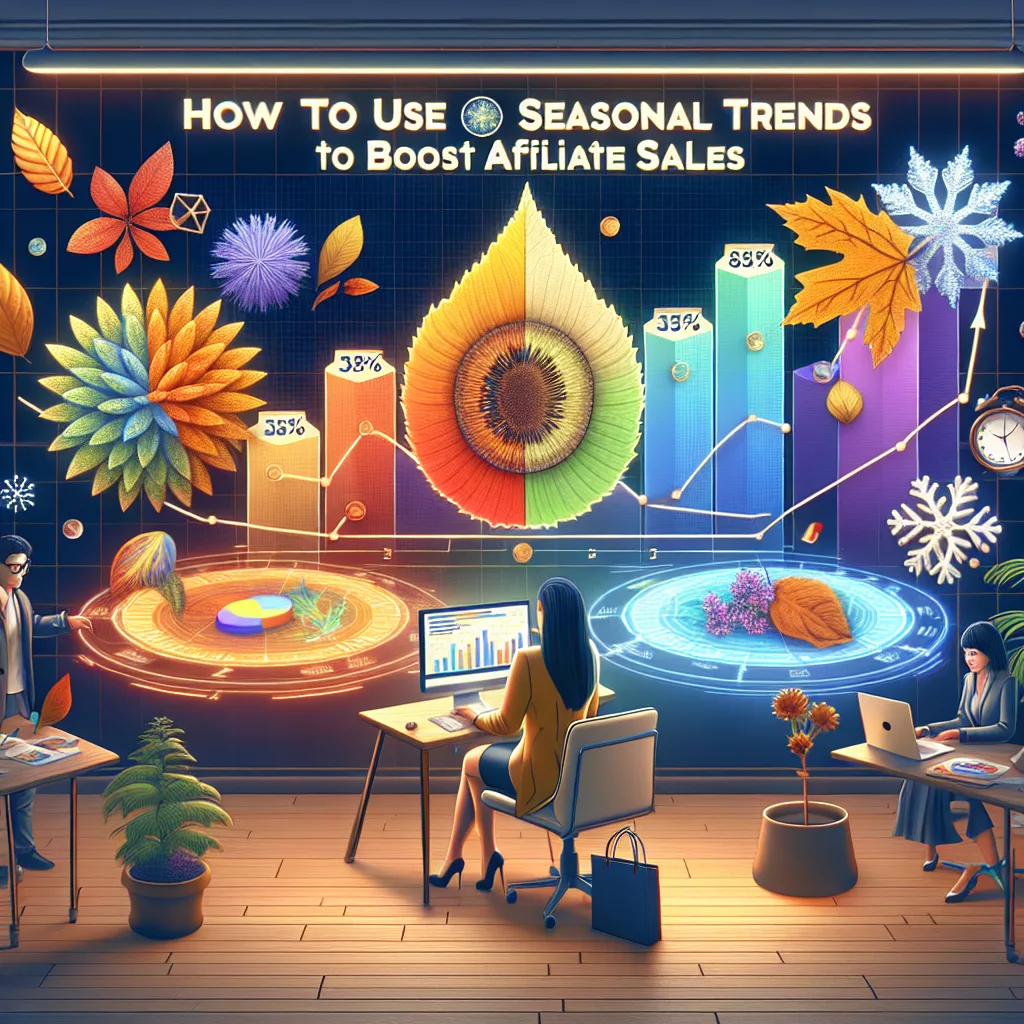Understanding Seasonal Trends
What Are Seasonal Trends?
Seasonal trends are shifts in consumer behavior based on the time of year. Think holidays, weather changes, and even school schedules. They play a major role in what people purchase at various times of the year. For instance, you wouldn’t see a rush on swimwear in December, right? Understanding these cycles can work wonders for your affiliate marketing strategy.
From my personal experience, diving into the data surrounding seasonal trends has helped me anticipate what my audience will want before they even realize it themselves. Imagine being the one to say, “Hey, I know you need this for the upcoming winter—let’s get you sorted!” That’s the kind of impact seasonal awareness can have.
So, take the time to research various peaks in buying behavior throughout the year. Look up historical data, maybe even consider using Google Trends to see what people are searching for during different seasons. This way, you’ll always be one step ahead!
Choosing the Right Affiliate Products
Aligning Products with Trends
Selecting the right products during these peak times is crucial. Imagine trying to push hot cocoa in July—it’s just not happening! Instead, focus on items that resonate with the seasonal vibe. For winter, cozy blankets and heaters might take the spotlight, while summer could be all about beach gear and outdoor grills.
One trick I’ve learned over the years is to go with products that have a proven track record during certain seasons. Check the sales history of your affiliate partners around holiday periods or special events. Products that fly off the shelves during these times can be your best friend.
And don’t forget to think outside the box. Sometimes, unexpected products can take off based on a seasonal trend. For example, during Halloween, I’ve seen crazy success with crafting kits and decorations that people didn’t even know they needed!
Creating Timely Content
Planning Your Content Calendar
Creating timely content is so important in this whole seasonal trend game. When you align your posts, videos, or newsletters with what’s happening in the real world, you’re bound to engage your audience better. I recommend planning a content calendar that highlights upcoming trends and holidays. When people are searching for holiday gift guides or summer plans, that’s the moment you want to strike!
For instance, I often draft my content at least a month in advance of a holiday to give myself plenty of time to optimize and tweak it. This not only sets me up for success but also gives my audience valuable insight when they’re most interested.
Also, consider utilizing different formats to convey your message—blogs, social media posts, videos, and even newsletters can give your content life, making it more relatable to the audience who’s shopping during seasons.
Engaging with Your Audience
Building Relationships through Engagement
In affiliate marketing, engagement is key, especially during peak seasonal times. When I promote products, I make sure to include personalized messages that resonate with my audience. Simple comments like, “I loved this during last holiday season!” can create a connection that drives sales.
Utilizing social media to engage with your audience around seasonal trends is a game-changer. I like to host giveaways or polls that relate to upcoming seasons. This not only boosts engagement but also gives you insight into what your audience is excited about.
If you can create a community around your brand, the chances of return customers during each season significantly increase. Plus, when they feel involved, they are much more likely to act on your recommendations!
Analyzing Results and Preparing for Future Trends
Tracking Performance Metrics
After each seasonal campaign, I make it a point to analyze what worked and what didn’t. We’re in the digital marketing game for the long haul, and the best way to improve is through understanding our metrics. Use analytics to see which products had the highest conversion rates and which content resonated the most.
Once you collect this data, use it to guide your next set of campaigns! If you saw a spike in interest for fall-themed decor this year, consider amplifying that content next year or even testing a wider range of products!
Also, keeping an eye out for emerging trends can help you stay ahead of the curve. Watching consumer behavior during off-seasons can give you clues about potential trends for the upcoming year.
FAQ
1. How can I find the right seasonal products to promote?
Look for historical sales data, examine market trends, and observe competitor promotions. Using tools like Google Trends can also help you identify what consumers are searching for by season.
2. What types of content work best for seasonal trends?
Consider gift guides, how-to videos, blog posts, and social media campaigns. Engaging content that ties into seasonal events can attract more audience interest and drive sales.
3. How do I engage my audience effectively?
Engagement comes from creating a dialogue. Host polls, ask questions related to upcoming holidays, and post stories that revolve around seasonal products. Connecting personally makes a difference!
4. What metrics should I track after a seasonal campaign?
Track conversion rates, traffic sources, click-through rates, and browse behaviors. Understanding these metrics will help you refine your strategy for future campaigns.
5. How far in advance should I start planning for seasonal content?
Ideally, I suggest starting at least a month in advance but don’t hesitate to plan even earlier for major seasons or holidays. This gives you time to craft quality content and adapt to any last-minute changes.
